
views
Creating Salt-Free Seasonings
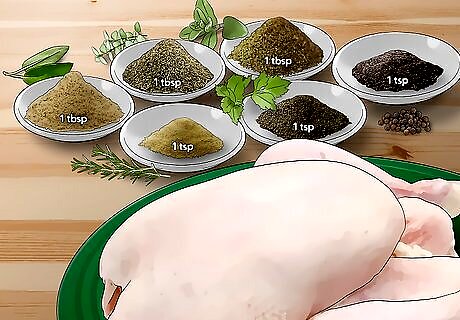
Mix a no-salt poultry seasoning. Add a rich flavor to your turkey or chicken by using a no-salt poultry seasoning. Drizzle the meat with some olive oil and one or two teaspoons of your seasoning. Cook the meat according to your recipe. To make the no-salt poultry seasoning, measure out and combine: 1 tablespoon of dried ground sage 1 tablespoon of dried ground thyme 1 tablespoon of dried ground marjoram 1 teaspoon of dried ground rosemary 1 teaspoon of crushed celery seed 1 teaspoon of ground black pepper

Create a no-salt seasoning for beef. If you're used to simply seasoning your steaks or roasts with salt and pepper, it's probably time to change up the flavors. Swap out salt and pepper for a no-salt beef seasoning that enhances the flavors of most cuts of beef. Sprinkle about 1/4 of a teaspoon of the seasoning for each pound of meat you're preparing. For the seasoning, you'll need to mix: 1 tablespoon of garlic powder 1 1/2 teaspoons of dried basil 1 1/2 teaspoons of dried parsley 1 1/4 teaspoons of ground thyme 1 teaspoon of ground mace or nutmeg 1 teaspoon of onion powder 1 teaspoon of ground black pepper 1 teaspoon of dried sage 1/4 teaspoon of cayenne pepper
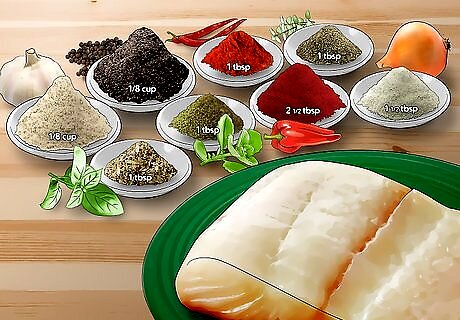
Make a salt-free seasoning for fish. If you'd like to give any type of fish or shrimp a zesty flavor with a little heat, create a salt-free version of seafood creole seasoning. Sprinkle the seafood with a little of the mixture and saute or blacken the seafood for additional flavor. You'll need to mix together: 1/8 of a cup of powdered garlic 1/8 of a cup of ground black pepper 1 tablespoon of cayenne pepper 1 tablespoon of dried thyme 1 tablespoon of dried basil 1 tablespoon of dried oregano 2 1/2 tablespoons of paprika 1 1/2 tablespoons of powdered onion
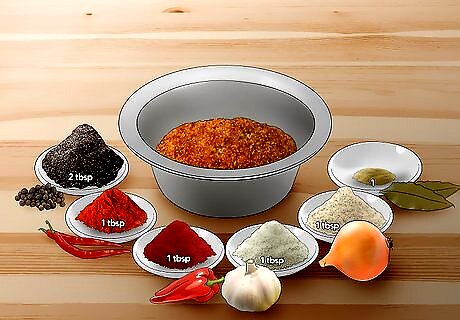
Create an all-purpose seasoning without salt. If you're someone who regularly reaches for the salt on the table, mix up an all-purpose seasoning that can replace your table salt. This way, you can reach for an instant flavor fix for your meals. Mix up this all purpose seasoning and store it in a spice jar. You'll need to combine: 2 tablespoons of black pepper 1 tablespoon of cayenne pepper 1 tablespoon of paprika 1 tablespoon of onion powder 1 tablespoon of garlic powder 1 ground bay leaf
Seasoning With Flavorful Ingredients
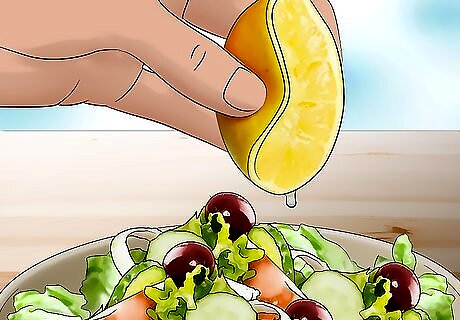
Use a squirt of lemon. Lemons are great for replacing salt since they give the same zip and depth of flavor to food. You can grate the zest and include it in baked foods or squeeze the lemon and add a squirt to your food. Lemon works well in: Salad dressings Pastas Poultry or seafood dishes Breadcrumbs

Cook with fresh herbs. Try to keep several types of fresh herbs on hand so you're more likely to cook with them. For even easier use, consider mincing (chopping them finely) and storing them in the fridge so you can quickly season or garnish your food. Try these fresh herbs that pair well with a variety of foods: Basil Dill Parsley Rosemary Thyme Chives
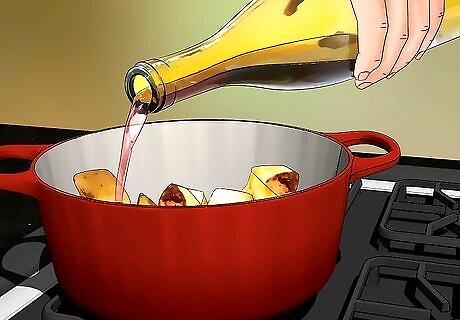
Season the food with a little wine. Cooking with red or white wine is a great way to concentrate flavor in your food. Add about 1/2 cup of red or white wine to your dish and let it cook down so the wine reduces. Avoid using cooking wine or sherry which usually have salt added and are high in sodium. For example, add red wine to a pasta sauce and let it simmer for an hour to amplify the flavor. Or you can add a splash of white wine to a seafood pasta sauce and let it cook down.

Use chicken, vegetable or beef stock. If you're cooking something that calls for a lot of water, you can usually replace it with a chicken, vegetable or beef stock. Ensure that the stock is salt-free (which is easy to do if you're making it at home). The stock will be more flavorful than the water and you won't even need to add salt. For example, if you're making a vegetable soup, replace the water with a stock for additional flavor.
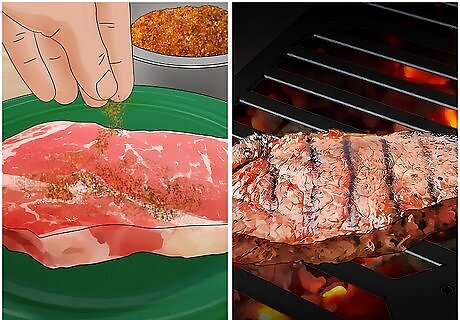
Grill your food. Mix up a quick salt-free marinade for meat or vegetables and heat up your grill. Grilling your food will give it a great smoky flavor and you won't even need to use salt. Try adding hickory or mesquite chips to the grill or grilling your food on a cedar wood plank for extra flavor. Try using a citrus-based marinade for even more seasoning. For example, marinate chicken in a lime vinaigrette and grill it for a bit of a smoky taste.
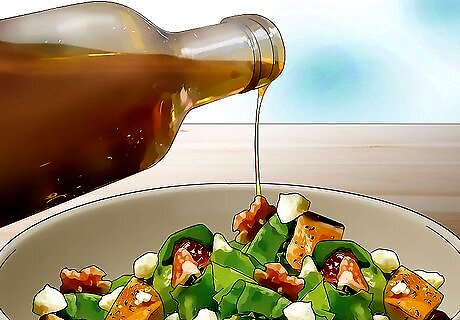
Add a little vinegar. There are a variety of vinegars you can use to replace salt. Try a splash of red wine vinegar, white wine vinegar, balsamic vinegar, or apple cider vinegar to give additional flavor to your food. Studies have shown that vinegar can enhance the salty flavor of foods. You can use vinegar in: Stews Salads Marinades Braised vegetables




















Comments
0 comment